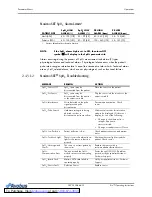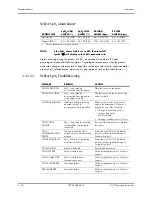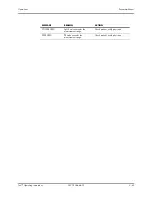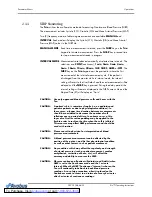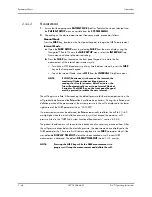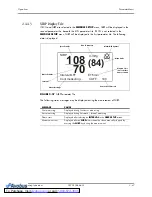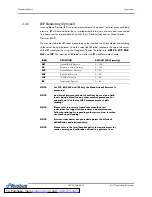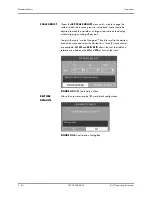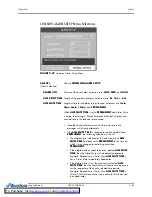
Parameter Menus
Operations
2 - 50
0070-10-0666-01
Trio™ Operating Instructions
NIBP Alarm Limits
Alarms occurring during the process of NIBP measurement include two (2) types:
physiological alarms and technical alarms. Physiological alarms occur when the patient’s
pressure values are equal to or exceed set alarm limits. Technical alarms are any NIBP-
related alarms, which are not physiological, such as functional failures.
Indirect BP Measurements and Associated Errors
Place the patient in a supine position to obtain true physiological pressure. If the cuff is not at
the patient's heart level, the pressure values obtained will not reflect the true physiological
pressure. Instead, the readings will be decreased by 0.75 mmHg (0.10 kPa) for every inch
above heart level, and increased by 0.75 mmHg (0.10 kPa) for every inch below heart level.
This is due to changes in hydrostatic pressure.
Precautions While Making Automatically Cycled Blood Pressure
Measurements
Reports have been made of nerve injury occurring from automatically cycled blood pressure
measurements. The following practices are recommended when making automatically cycled
blood pressure measurements:
• Position and support the limb in such a way as to minimize stretching of affected nerves,
as well as, weight exertion on affected nerves
• Avoid cuff placement that applies pressure on the ulnar nerve. Cuff tubing should not exit
the cuff over the course of the ulnar nerve at the elbow
• Select a measurement interval that provides adequate venous drainage during cuff
deflation
• Periodically inspect the limb bearing the cuff in order to detect venostasis
• If necessary, move cuff to another limb to relieve single-limb stress
Cuff Size
When applying the NIBP cuffs use the range markings as a guide to ensure proper fit and
cuff size. Use of a narrow cuff may give erroneous pressure readings. If a standard cuff is
applied to an obese patient or a patient with large biceps, the excess tissue will dissipate the
applied pressure, requiring additional attempts to collapse the artery. This may result in high
pressure readings. Over-wrapping a slender arm may also give erroneous pressure readings
due to excessive force exerted on the arm.
PATIENT SIZE
SYS
HIGH
(mmHg)
SYS
LOW
(mmHg)
MEAN
HIGH
(mmHg)
MEAN
LOW
(mmHg)
DIA
HIGH
(mmHg)
DIA
LOW
(mmHg)
Adult (ADU)
70 – 240
[180]
50 – 150
[80]
60 – 200
[100]
40 – 140
[40]
40 – 130
[100]
30 – 120
[50]
Pediatric (PED)
40 – 180
[150]
15 – 130
[70]
50 – 180
[80]
10 – 100
[30]
50 – 100
[80]
10 – 50
[40]
*
Factory default values shown in brackets.
*
To Purchase, Visit



